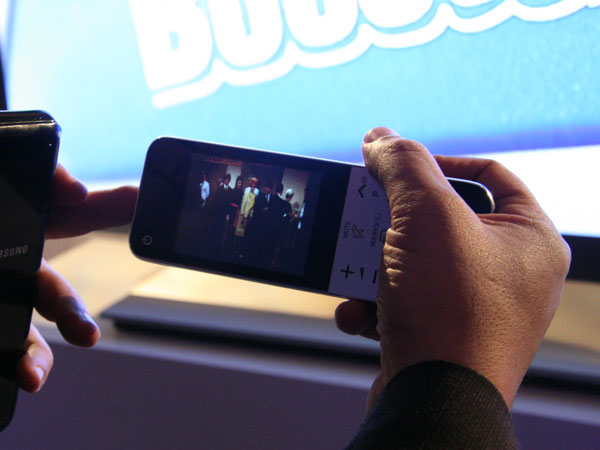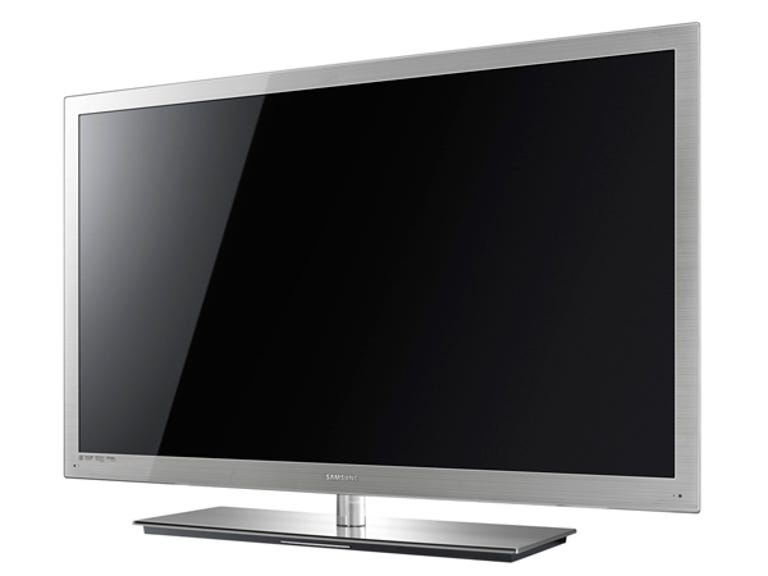 Why You Can Trust CNET
Why You Can Trust CNET Samsung LED C9000 review: Samsung LED UA55C9000
A true flagship, the Samsung LED UA55C9000 is undoubtedly the company's best TV for 2010, but you're paying for the privilege.
It's been a while since we've had a "luxury" TV through the gates of CNET Towers, and we think that one of the main reasons is that no one really makes them any more. Sure, the Europeans are still throwing them out there but you won't see them on the floor of your local Bing Lee.
The Good
The Bad
The Bottom Line
While Samsung has flirted with designer goods through collaborations with Bang & Olufsen, this is the first time the company has struck out on its own. The Samsung C9000 is a self-proclaimed "luxury good", and while it certainly looks "luxurious", is it in actuality "good"? Incidentally, this TV won't be sold at Bing Lee either — it's "premium" stores only.
Design
You've no doubt seen the price tag by the time you got here, and while TVs used to cost that much back in the days of the Pioneer Kuro it's now quite a rare occurrence. One of the reasons for this? Exhibit A: the TV is clad in stainless steel. And it looks quite spiffy too. The surface is less reflective than piano-black finishes and so moderately less distracting.
Even with the stainless steel on the front and back of the TV, it is miraculously thin coming in at 8mm. But this is a little deceptive, because if you're wall-mounting the TV you still need to attach the stand as well — it attaches to the back, you see, as it contains all of the inputs and electronics. This makes the TV marginally thicker at 3cm from the wall. To "save you money" the TV ships with the wall mount in the box.
—Just as sensational as the TV is the remote itself. It's a 3-inch touchscreen model that communicates with the TV via Wi-Fi and also acts as a second screen. While it's got amazing capabilities it isn't the easiest to use. Like some tablet remotes, you may have to do lots of screen-swapping to control the TV at times — even the Logitech Harmony 1100i was better at juggling multiple screens. On a lesser note, the TV includes a keyboard control, but it won't work when trying to enter the security code for wireless, which is one of the few times we'd actually need a QWERTY keyboard on a TV remote. The remote comes with a 3.5mm jack for connecting headphones.

The C9000 remote acts like a second TV(Credit: Ty Pendlebury)
Features
Not only is the Samsung C9000 one of the most beautiful TVs we've seen, but it's also one of the most feature-packed. But you know what? This also makes it the most complicated.
Starting from the basics, this is a 55-inch LCD television with a full-HD resolution, and it features LED edge-lighting. It comes with all the gubbins you'd expect like 200Hz and an Ultra Clear Panel.
Moving on to actual features though and the list reads like a Samsung brainstorming session. First and foremost is 3D playback, and the TV does the usual 2D-to-3D conversion of most other models, and if you're lucky the company might throw in a couple of glasses for you (though not included).
Connectivity is also a focus with the TV offering both wired (via a small dongle) and wireless (via a ridiculously HUGE, foot-long USB adapter!). To use the "dual-screen" capability, the TV and remote need to be connected to the same network and so the wireless connection might be better for the ease of configuration.
On top of this you also get Samsung Apps like Facebook and Google Maps plug-ins — even an "NRL Analyser" via BigPond — and DLNA support is also included.
If you want to connect all your stuff you plug it directly into the base of the TV. It comes with slots for four HDMI 1.4-compatible plugs (with one Audio-Return Channel (ARC)) and two USB slots. The base itself is quite thick — about two centimetres — and so we were surprised to see Samsung use proprietary adapters for the other connectors here. You get a single component, Ethernet, PC in as well as a full-size digital output — for users without an ARC-compatible receiver. The base also conceals the speakers and a "menu bar" that slides out on touch, but we'd prefer to use the remote as it feels flimsy.
Performance
Given the TV's thinness, we'd be lying if we said we weren't sceptical about the television's potential to deliver a brilliant picture. But having tested it we can actually say our fears were unfounded — this is a brilliant little performer. As we say in the tongue-in-cheek video review, sure you can get a better picture out of a screen a quarter of the price, but this is hardly the point.
Whether we were watching test patterns or a Blu-ray we found the C9000 to have an engaging, detailed picture unmarred by image defects. The on-board video processing is the best we've seen from Samsung and it shows the TV's beauty isn't simply steel deep. In fact, the processing was as good if not better than that on the new Sony range. That's what a part of your money is paying for.
Contrast levels were deep, and while not to the level of the Sony HX800, it's still on a par with a mid-range plasma. The screen also managed to eradicate other issues such as moire, blockiness and judder, and this was particularly evident on our Mission Impossible III Blu-ray. The C9000 is one of the best TVs at cleaning up a noisy source we've seen in a while. Even a notoriously noisy DVD like King Kong came out looking higher-def than it had any right to.
Sound quality was very good, and better when in pedestal mode. The on-board speakers are clear, can go loud and are decently dynamic with movie soundtracks. We found that the SRS mode "Movie" was best as dialogue was obscured in Standard mode.
Is there room for improvement? Of course, there always is. And in this case it was 3D — while this is a native 3D TV we wouldn't buy it for that. Images are filled with ghostly crosstalk and we found on-screen movement a bit disorienting. On the plus side it has a much higher brightness than the Panasonic VT20 in 3D mode.
Finally, a few words on the remote. Confusing as it tended to be it is still one of the "wow" factors of this TV. At only AU$299 to replace, it's really the think-tank of this operation. Meanwhile, the "clone view" was not actually that practical — if you're further than 20m from your router and through a single wall you will get break-up on an SD program. Also, changing channels will change the main TV in most cases so it's not that useful as a "second tuner". Battery life was only average lasting one to two days between charges.
Conclusion
Are Ferrari's expensive? Are Rolex's too dear? You can't compare this TV directly with other consumer goods on the market as it sits by itself. Sure, on value for money, it stinks, but there's a lot more at play here. Samsung has a long-standing partnership with Bang & Olufsen and the C9000 shares a a similar aesthetic with that brand.
Pioneer tried and unfortunately failed at trying to bring high-end products to the television market, but Samsung is having its own crack at making it work this time around. The difference is that the C9000 is only one of dozens of TVs and it's not as critical as trying to sell one of only four Pioneer Kuros.
If you've read your way through this entire review then odds are the TV isn't pitched at you. While the TV does perform excellently it's the aesthetics that are accentuated here — Samsung itself has called this TV a "luxury good". But you can't make your products luxury items simply by calling them that — you have to earn it — and with the C9000 Samsung goes a long way to prove it has earned it.


